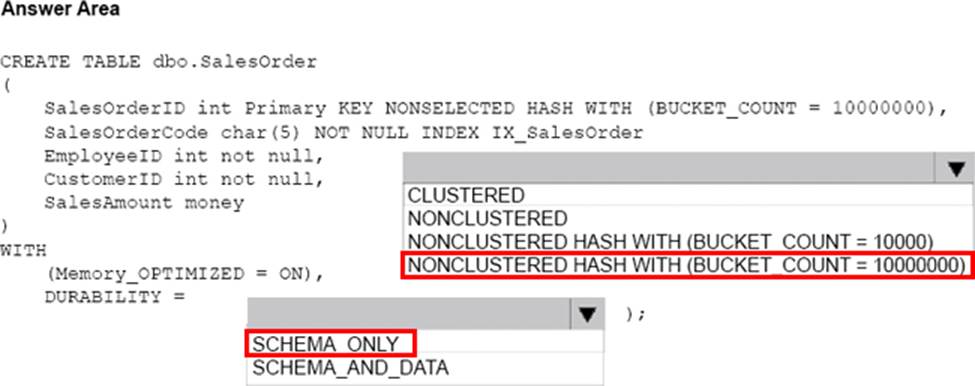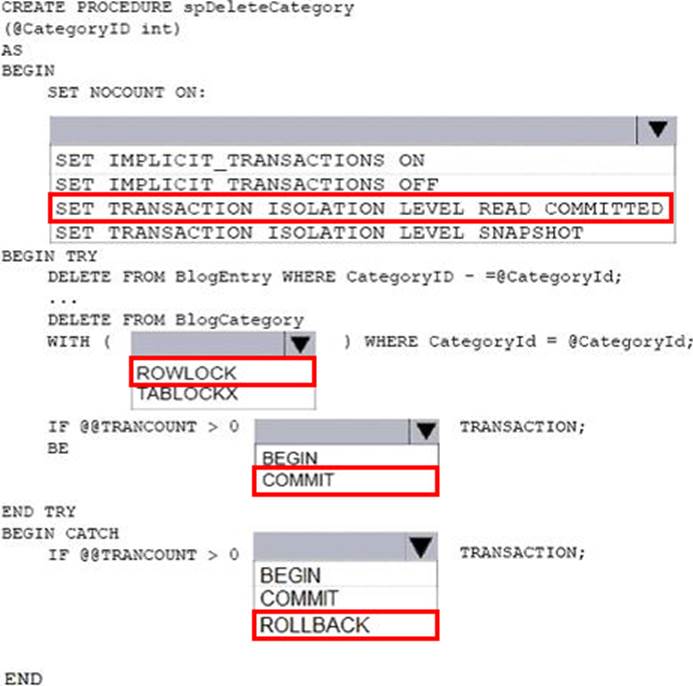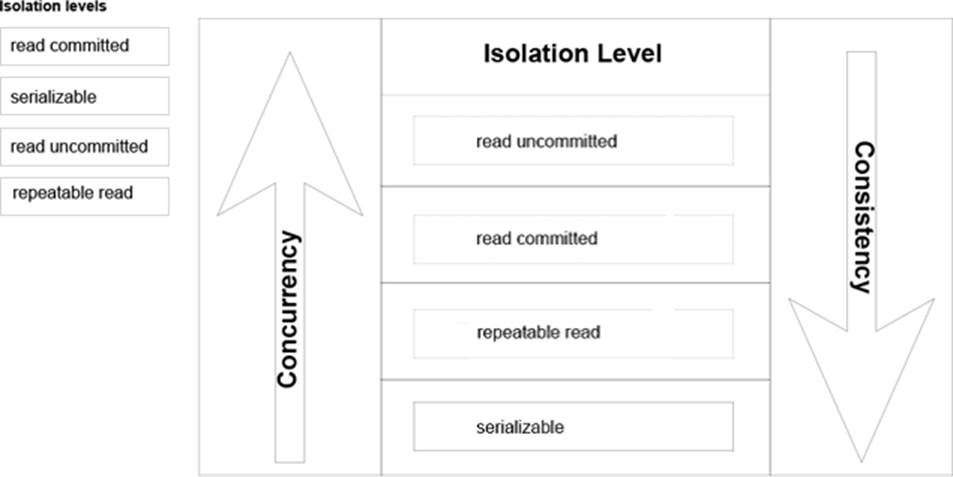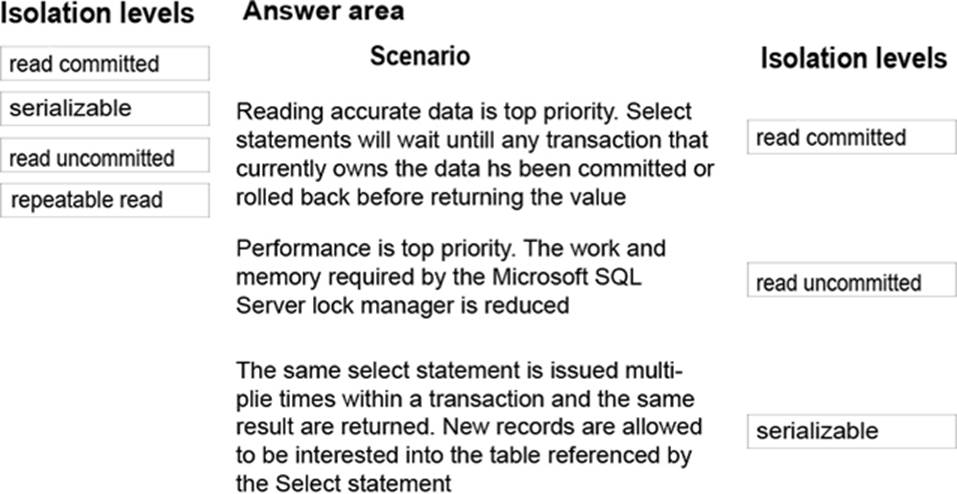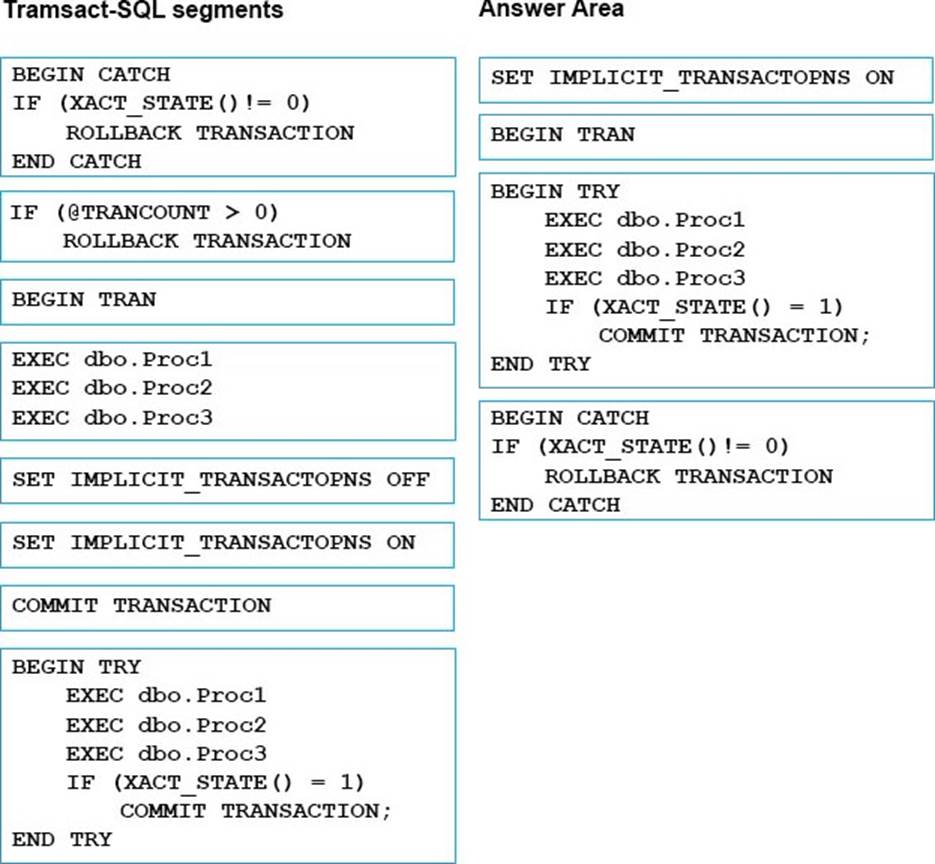Microsoft 70-762 Developing SQL Databases Online Training
Microsoft 70-762 Online Training
The questions for 70-762 were last updated at Jan 21,2025.
- Exam Code: 70-762
- Exam Name: Developing SQL Databases
- Certification Provider: Microsoft
- Latest update: Jan 21,2025
If an error occurs during a delete operation on either table, all changes must be rolled back, otherwise all changes should be committed.
How should you complete the procedure? To answer, select the appropriate Transact-SQL segments in the answer area.
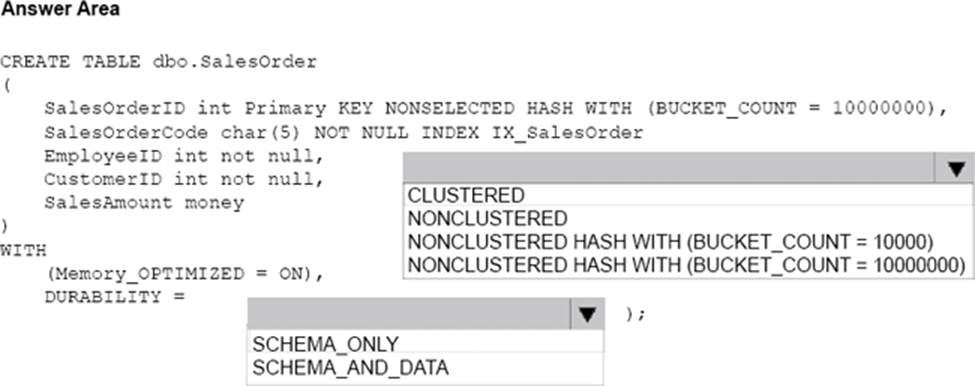
If an error occurs during a delete operation on either table, all changes must be rolled back, otherwise all changes should be committed.
How should you complete the procedure? To answer, select the appropriate Transact-SQL segments in the answer area.

If an error occurs during a delete operation on either table, all changes must be rolled back, otherwise all changes should be committed.
How should you complete the procedure? To answer, select the appropriate Transact-SQL segments in the answer area.

If an error occurs during a delete operation on either table, all changes must be rolled back, otherwise all changes should be committed.
How should you complete the procedure? To answer, select the appropriate Transact-SQL segments in the answer area.

If an error occurs during a delete operation on either table, all changes must be rolled back, otherwise all changes should be committed.
How should you complete the procedure? To answer, select the appropriate Transact-SQL segments in the answer area.

If an error occurs during a delete operation on either table, all changes must be rolled back, otherwise all changes should be committed.
How should you complete the procedure? To answer, select the appropriate Transact-SQL segments in the answer area.
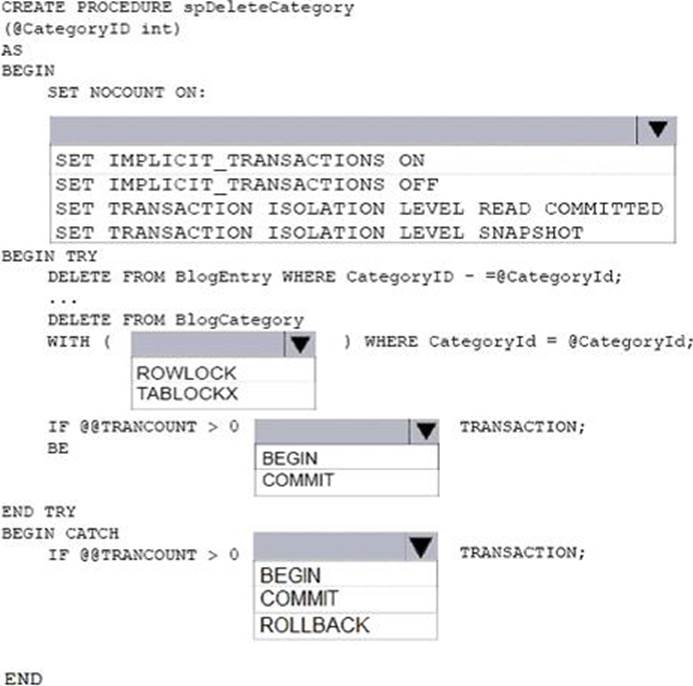
DRAG DROP
You are analyzing the performance of a database environment.
Applications that access the database are experiencing locks that are held for a large amount of time. You are experiencing isolation phenomena such as dirty, nonrepeatable and phantom reads.
You need to identify the impact of specific transaction isolation levels on the concurrency and consistency of data.
What are the consistency and concurrency implications of each transaction isolation level? To answer, drag the appropriate isolation levels to the correct locations. Each isolation level may be used once, more than once, or not at all. You may need to drag the split bar between panes or scroll to view content.
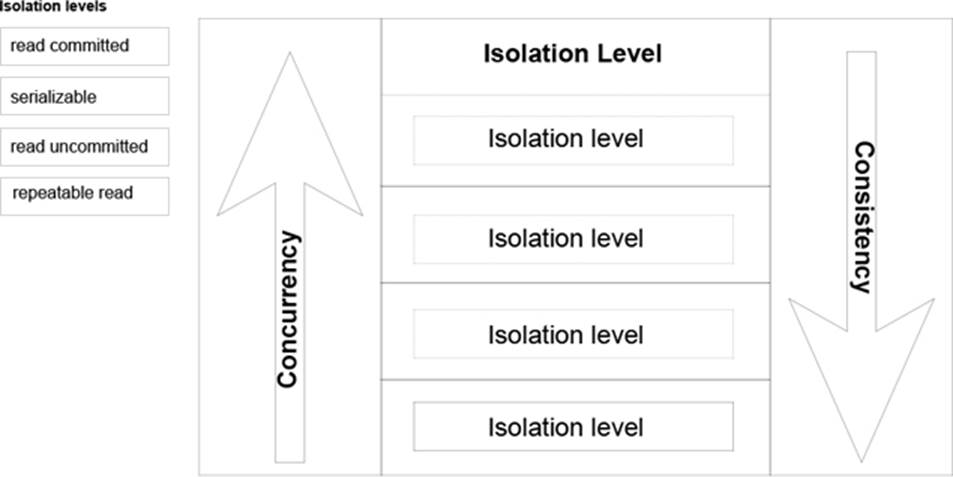
DRAG DROP
You are evaluating the performance of a database environment. You must avoid unnecessary locks and ensure that lost updates do not occur. You need to choose the transaction isolation level for each data scenario.
Which isolation level should you use for each scenario? To answer, drag the appropriate isolation levels to the correct scenarios. Each isolation may be used once, more than once, or not at all. You may need to drag the split bar between panes or scroll to view content.
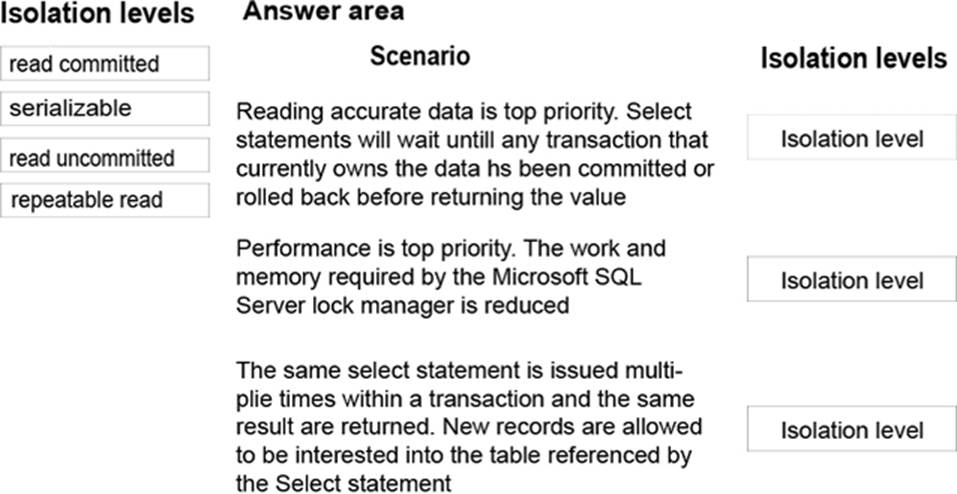
DRAG DROP
You have two database tables. Table1 is a partioned table and Table 2 is a nonpartioned table.
Users report that queries take a long time to complete. You monitor queries by using Microsoft SQL Server Profiler. You observe lock escalation for Table1 and Table 2.
You need to allow escalation of Table1 locks to the partition level and prevent all lock escalation for Table2.
Which Transact-SQL statement should you run for each table? To answer, drag the appropriate Transact-SQL statements to the correct tables. Each command may be used once, more than once, or not at all. You may need to drag the split bar between panes or scroll to view content.

DRAG DROP
You have a database that contains three encrypted store procedures named dbo.Proc1, dbo.Proc2 and dbo.Proc3. The stored procedures include INSERT, UPDATE, DELETE and BACKUP DATABASE statements.
You have the following requirements:
– You must run all the stored procedures within the same transaction.
– You must automatically start a transaction when stored procedures include DML statements.
– You must not automatically start a transaction when stored procedures include DDL statements.
You need to run all three stored procedures.
Which four Transact-SQL segments should you use to develop the solution? To answer, move the appropriate Transact-SQL segments to the answer area and arrange then in the correct order.
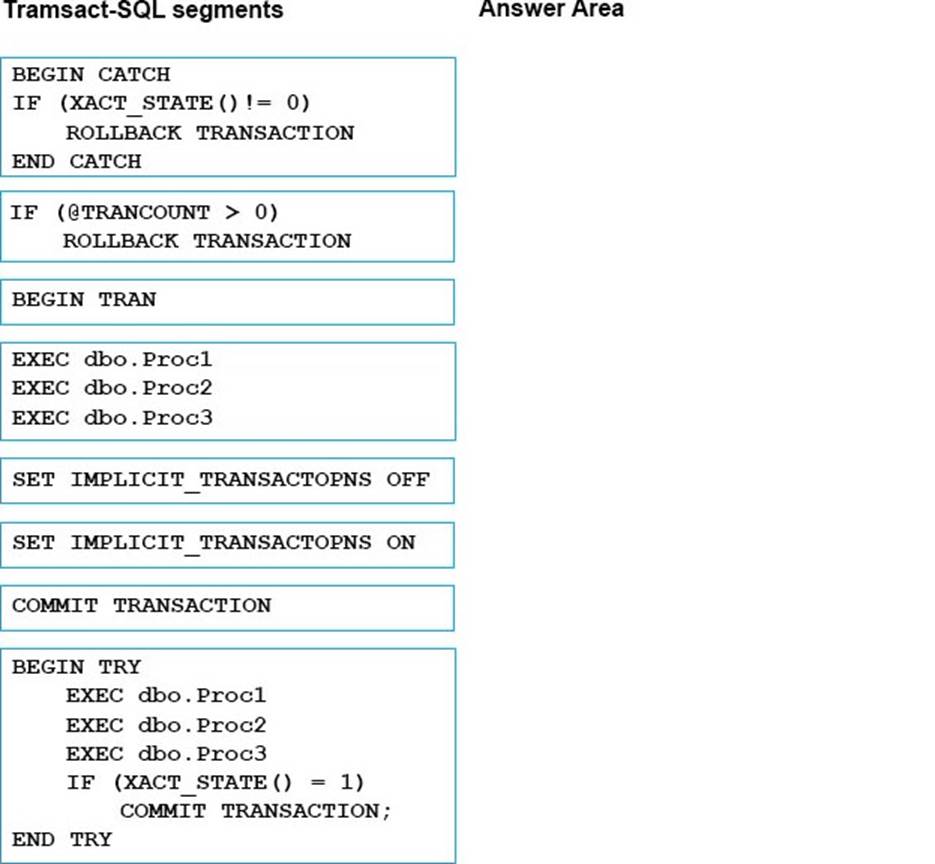
Latest 70-762 Dumps Valid Version with 157 Q&As
Latest And Valid Q&A | Instant Download | Once Fail, Full Refund

